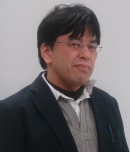

Plenary Lecture
Application of Self Organizing Maps to Multi-Modal Adaptive Authentication System

Associate Professor Hiroshi Dozono
Faculty of Science and Engineering
Saga University
JAPAN
E-mail: hiroshidozono@gmail.com
Abstract: Recently, biometric authentication attracts more attention as the security system. Biometric authentication is classified to two types. The first type is biometric authentication using biological biometrics such as fingerprint, iris, and vein pattern. The authentication system using biological biometrics generally shows high accuracy. However, it needs special hardware for implementation. Furthermore, biological biometrics can be copied because they are static information. The other type is biometric authentication using behavior biometrics such as keystroke timings, pen patterns, and pressures writing signs or handwritten patterns and walking patterns. For implementing to a computer system or mobile system, the device that is equipped with the system can be used to obtain the behavior biometrics. For example, many recent mobile devices are equipped with touch panels, which can be used to obtain sign or handwritten patterns. And it is difficult to imitate behavior biometrics because it is dynamic information. However, the accuracy of the authentication system using behavior biometrics is less than that of using biological biometrics because of the fluctuation of the behaviors. For solving this problem, integration of several biometrics is accepted to be effective. We proposed the authentication method using integrated information of multi-modal behavior biometrics. For example, the integration of the pen speed and pen pressures of handwritten patterns, integration of the features of handwritten patterns and keystroke timing for Tablet PC, and integration of keystroke timings and key typing sounds obtained from keyboard and microphone equipped to the notebooks were proposed.
For the authentication system, we proposed Supervised Pareto learning Self Organizing Map(SP-SOM) which can integrate the multi modal biometrics naively based on the concept of Pareto optimality. SP-SOM registers the input data of several users and can identify the user from the test input for authentication. For this problem we proposed Concurrent SP-SOM and Concurnt P-SOM which uses small map for each user.
Brief Biography of the Speaker: Hiroshi Dozono graduated from Kyoto University, Japan in 1984, and graduated Doctor cource of Kyoto Univeristy in 1989. He worked in Tokushima University for two years, and in Kumamoto University for three years and currently works in Saga University as Associate Professor. His research area is Object Oriented System, Knowledge Engineering, Control Theory, Artificial Intelligence, Evolutional Algotithm Neural Networks. Recently, he specialized in application of Self Organizing Maps to Bioinformatics, Security Systems, and Control systems. He is author of about 50 papers published in international journals and conference proceedings.